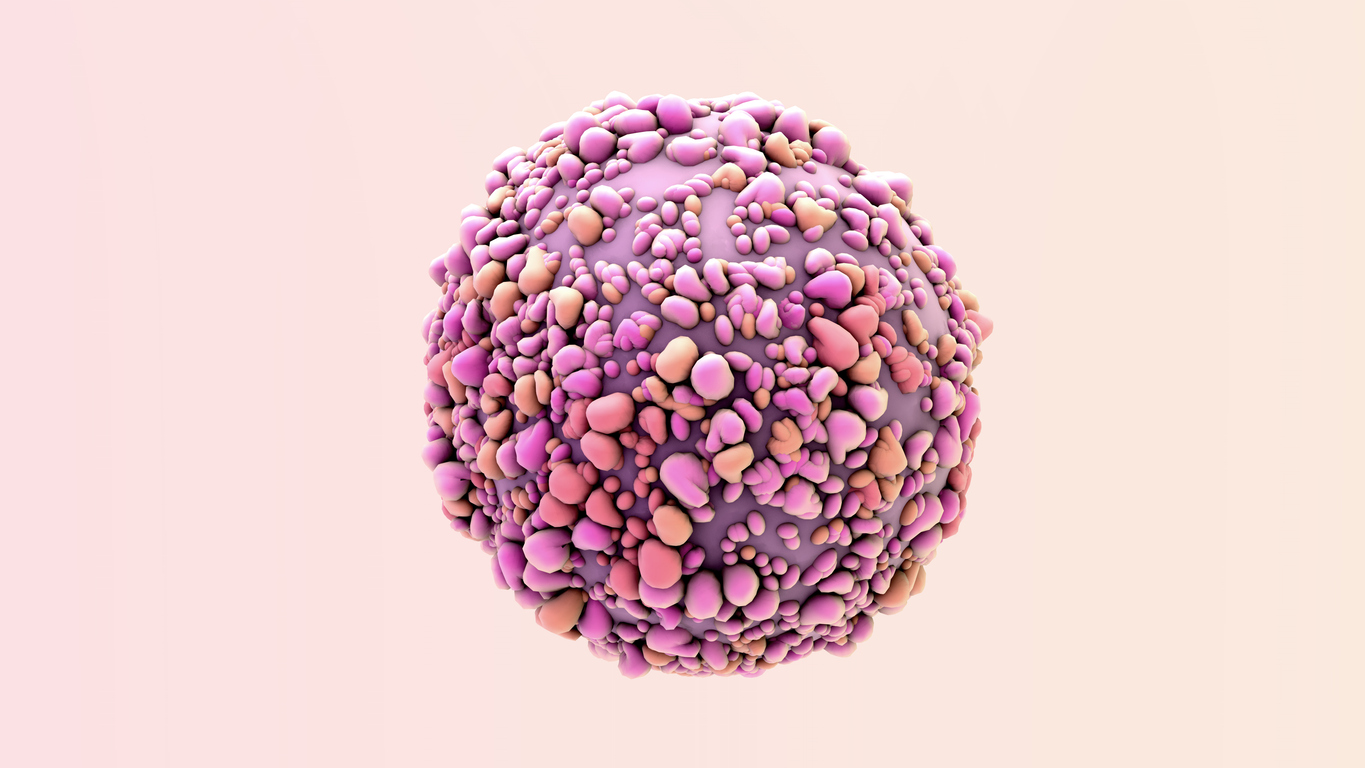2025-10-29
Camrelizumab + Apatinib: a winning combo against TNBC?
Oncology
By Ana Espino | Published on October 29, 2025 | 2 min read
Triple-negative breast cancer (TNBC) is one of the most aggressive subtypes of breast cancer, often affecting younger women. It is characterized by the absence of hormone receptors and HER2 overexpression, as well as a strong propensity for early metastatic relapse—especially within the first few years after diagnosis. Because it is unresponsive to conventional targeted therapies, patients with TNBC are left with limited effective treatment options.
Given its aggressiveness and lack of specific molecular targets, new therapeutic strategies are essential to improve prognosis. Immunotherapy has opened new perspectives, yet trials with anti-PD-1 or anti-PD-L1 antibodies as monotherapy have shown disappointing results, particularly in advanced disease. Meanwhile, angiogenesis, which is frequently activated in TNBC, may act synergistically with immune modulation, potentially enhancing antitumor responses.
In this context, this study aimed to evaluate the efficacy and safety of combining camrelizumab (anti-PD-1) with apatinib (anti-VEGFR2) in patients with locally advanced or metastatic TNBC who had experienced chemotherapy failure.
A total of 40 patients with locally advanced or metastatic TNBC, previously treated with no more than two lines of chemotherapy, were enrolled. Patients received camrelizumab 200 mg intravenously every 3 weeks combined with apatinib 250 mg orally, administered continuously.
The primary endpoint was the objective response rate (ORR), while secondary endpoints included duration of response, progression-free survival (PFS), overall survival (OS), safety, and exploratory biomarker analyses to identify predictors of immunologic response.
The ORR reached 43.3%, including 2 complete responses and 15 partial responses. The median duration of response was 8.3 months, with a median PFS of 5.6 months and a median OS of 13.6 months. The combination was generally well tolerated. The most common adverse events were hypertension (40%), proteinuria (32.5%), and fatigue (30%). Grade ≥3 adverse events occurred in 20% of patients, with no treatment-related deaths.
Exploratory biomarker analysis suggested that patients with high intratumoral infiltration of CD8+ T cells derived greater benefit from treatment, indicating a synergistic effect in tumors with pre-existing immune activation.
TNBC is characterized by clinical aggressiveness and a lack of durable therapeutic targets. Current options remain limited, and early relapse rates highlight an urgent need for innovation. Among emerging strategies, combining immunotherapy with antiangiogenic agents may represent a powerful approach to amplify antitumor responses.
This exploratory phase II study evaluated camrelizumab (anti-PD-1) and apatinib (anti-VEGFR2) in pretreated patients with advanced TNBC. The findings show a promising response rate, prolonged survival outcomes, and an acceptable safety profile, supporting the potential of this dual-target strategy as a second-line option.
However, important limitations remain: the sample size was small, and the study was non-randomized. Larger, randomized, stratified clinical trials are required to confirm these results and determine the exact role of this combination in the therapeutic landscape of TNBC, particularly according to tumor immune profiles.
About the author – Ana Espino
As a scientific writer, Ana is passionate about bridging the gap between research and real-world impact. With expertise in immunology, virology, oncology, and clinical studies, she makes complex science clear and accessible. Her mission: to accelerate knowledge sharing and empower evidence-based decisions through impactful communication.
Triple-negative breast cancer (TNBC) is one of the most aggressive subtypes of breast cancer, often affecting younger women. It is characterized by the absence of hormone receptors and HER2 overexpression, as well as a strong propensity for early metastatic relapse—especially within the first few years after diagnosis. Because it is unresponsive to conventional targeted therapies, patients with TNBC are left with limited effective treatment options.
Given its aggressiveness and lack of specific molecular targets, new therapeutic strategies are essential to improve prognosis. Immunotherapy has opened new perspectives, yet trials with anti-PD-1 or anti-PD-L1 antibodies as monotherapy have shown disappointing results, particularly in advanced disease. Meanwhile, angiogenesis, which is frequently activated in TNBC, may act synergistically with immune modulation, potentially enhancing antitumor responses.
In this context, this study aimed to evaluate the efficacy and safety of combining camrelizumab (anti-PD-1) with apatinib (anti-VEGFR2) in patients with locally advanced or metastatic TNBC who had experienced chemotherapy failure.
A synergy that changes the game?
A total of 40 patients with locally advanced or metastatic TNBC, previously treated with no more than two lines of chemotherapy, were enrolled. Patients received camrelizumab 200 mg intravenously every 3 weeks combined with apatinib 250 mg orally, administered continuously.
The primary endpoint was the objective response rate (ORR), while secondary endpoints included duration of response, progression-free survival (PFS), overall survival (OS), safety, and exploratory biomarker analyses to identify predictors of immunologic response.
The ORR reached 43.3%, including 2 complete responses and 15 partial responses. The median duration of response was 8.3 months, with a median PFS of 5.6 months and a median OS of 13.6 months. The combination was generally well tolerated. The most common adverse events were hypertension (40%), proteinuria (32.5%), and fatigue (30%). Grade ≥3 adverse events occurred in 20% of patients, with no treatment-related deaths.
Exploratory biomarker analysis suggested that patients with high intratumoral infiltration of CD8+ T cells derived greater benefit from treatment, indicating a synergistic effect in tumors with pre-existing immune activation.
Toward a new weapon in the TNBC arsenal
TNBC is characterized by clinical aggressiveness and a lack of durable therapeutic targets. Current options remain limited, and early relapse rates highlight an urgent need for innovation. Among emerging strategies, combining immunotherapy with antiangiogenic agents may represent a powerful approach to amplify antitumor responses.
This exploratory phase II study evaluated camrelizumab (anti-PD-1) and apatinib (anti-VEGFR2) in pretreated patients with advanced TNBC. The findings show a promising response rate, prolonged survival outcomes, and an acceptable safety profile, supporting the potential of this dual-target strategy as a second-line option.
However, important limitations remain: the sample size was small, and the study was non-randomized. Larger, randomized, stratified clinical trials are required to confirm these results and determine the exact role of this combination in the therapeutic landscape of TNBC, particularly according to tumor immune profiles.
Read next: FOXC1: The GPS for Capecitabine in TNBC?
About the author – Ana Espino
PhD in Immunology, specialized in Virology

Last press reviews
Dark chocolate: guilty pleasure or a renal ally?

By Ana Espino | Published on December 16, 2025 | 3 min read<br>...
A post-exercise infrared sauna session: a booster for neuromuscular recovery or just comfort?

By Lila Rouland | Published on December 15, 2025 | 3 min read<br>
Cinnamon: more than just a spice?

By Ana Espino | Published on December 12, 2025 | 3 min read<br>...